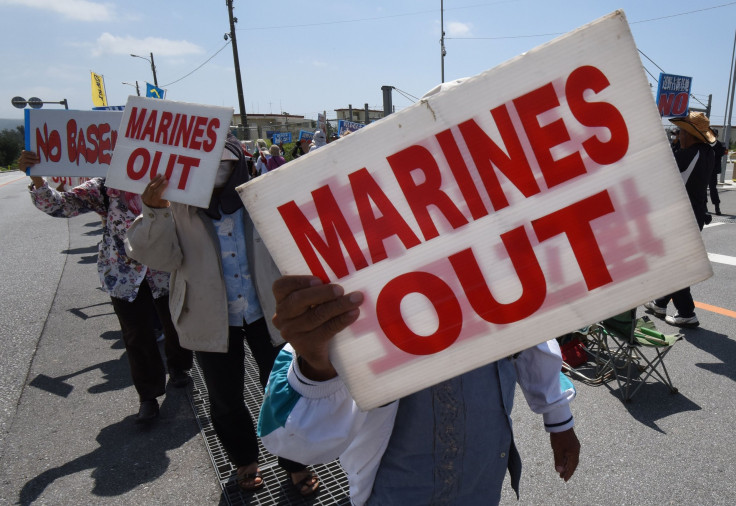Relocation Of US Base In Okinawa To Stretch Into 2030s, To Cost Double The Estimate

KEY POINTS
- The estimated cost more than doubled to $8.5 billion
- The shift may take another 12 years to complete
- Locals do not want the U.S. to keep the base at all
The relocation of a Marine Corps base in Okinawa in Japan to a less populated part of the island may cost more than double of the original estimate. The shifting of the MCAS Futenma may take at least 12 years more since the reclaimed piece of land was found to be "as soft as mayonnaise."
The Japanese government and residents of the island have been working to move the base southwards from the crowded Ginowanto Henoko. The United States, which have stationed its troops on the Japanese island since the end of the World War II, has faced demands from the local population to shift the base for environmental reasons as it is home to corals and dugongs. An even larger portion of the population would like the U.S. military presence to be completely removed from the island.
The shifting of the base out of Ginowanto Henoko is likely to stretch into the 2030s, lagging an earlier deadline of 2020. The original estimated cost of $3.2 billion has now ballooned to $8.5 billion, Stars&Stripes reported.
Several issues have slowed the progress of the move, ranging from local opposition to budget shortfalls. The new location of the base is supposed to be on recently reclaimed land, which was found not stable enough to support runways that are essential for the functioning of the base. Extra time will be needed to stabilize the area and make it strong enough for the project to succeed.
There have been countless issues surrounding the behavior of military personnel and their interactions with the local populace. The U.S. has maintained close relations with Japan as allies and economic partners and is still tasked with providing overall protection based on the Security Treaty signed in 1951. Despite the objections of the local population the U.S. will continue to be present on the island for the foreseeable future.
The U.S. maintains a sizeable portion of it's 58,000 Japan-based personnel on the island.
© Copyright IBTimes 2024. All rights reserved.






















